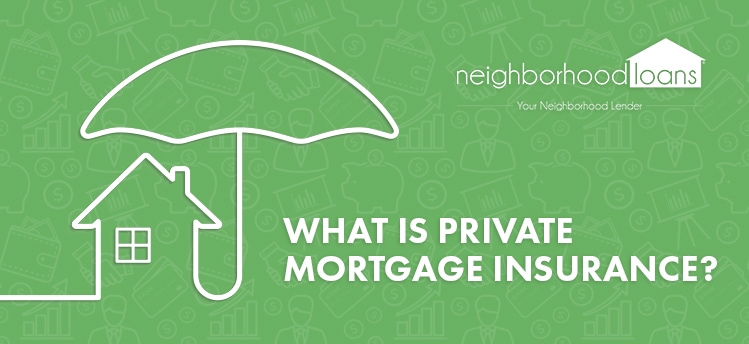This is What Happens When Your Lender Requires PMI

Like any big investment, you want to take extremely good care of it, like the lasted model of the iPhone.
You want to polish your newest Apple product every minute and protect it from any harm or evil.
Sometimes in life, unexpected things happen that you can’t control, like a shattered screen.
What do you do then?
Many people buy and rely on Apple insurance to resolve those anxious situations.
Similarly, home insurance provides comfort and reassurance even in the most stressful times. This pre-planned solution will take care of everything.
When buying a home, it is highly advised to purchase mortgage insurance to protect yourself from unpredictable tragedies, like fires, earthquakes or robberies.
However, there is another type of mortgage insurance home buyers should be aware of.
Before taking the plunge into homeownership, familiarize yourself with private mortgage insurance.
Especially if you plan on your down payment being less than 20 percent of the home’s market value price.
What is private mortgage insurance (PMI)?

Private mortgage insurance, also known as PMI, is a type of mortgage insurance that you may be required to pay if you apply for a conventional loan.
Unlike other mortgage insurances, PMI protects the lender if the borrower stops making payments on the loan.
PMI is usually required by the lender when the borrower applies for a conventional loan and makes a down payment less than 20 percent of the home’s market price.
The amount you put down upfront is the foundation of how your mortgage will be financially handled.
Private insurance companies provide PMI and your lender will arrange the requirements and expectations for the borrower to follow.
How to pay for PMI

There are several ways to pay for PMI. Depending on your lender, they can offer you different ways to finance your insurance.
Before settling on a mortgage, ask your lender what payment options they offer.
Typically, the most common way to pay for PMI is a monthly premium.
This premium will be automatically added into your monthly mortgage payments.
So, when you apply for a mortgage with a down payment less than 20 percent, a premium will be calculated into your loan estimate, which will give you a better idea of how to budget accordingly.
Another option lenders can extend is a one-time upfront premium paid at closing.
Again, this premium will be shown on your loan estimate when you apply for a mortgage.
However, if you make an upfront payment and decide to move or refinance, you may not get refunded for the premium.
Some lenders require borrowers to pay both upfront and monthly premiums. Either way, your lender will add and calculate both premiums into your loan estimate so you know exactly what to expect.
To make the right decision, ask your loan officer to calculate several scenarios over a certain time frame to give you a more realistic idea of how you will be left financially each month.
What factors to consider

Choosing a mortgage loan that requires PMI can potentially help you qualify for a loan that may not be easy to obtain.
However, it may increase the cost of your loan.
In addition, PMI only protects the lender, not you, the borrower, if you end up in foreclosure.
Sometimes, certain lenders offer conventional loans with smaller down payments that do not require PMI.
But, loan payments will most likely have a higher interest rate.
Depending on how long you plan on living in the home, the interest rate can either be more or less expensive than PMI.
To avoid spending more money than necessary, ask for a tax advisor’s opinion if paying a higher interest rate or PMI will affect your taxes differently.
If you plan on making a lower down payment, consider different loan options that do not require PMI, such as an FHA loan.
The Federal Housing Administration offers homebuyers FHA loans that require a down payment as little as 3.5% of the home’s market value.
Consider other available mortgage loan options to help finance your home. Or different loan grants and programs that offer down payment assistance to those who qualify!
Depending on your credit score, income, market conditions and down payment amount, other loans may be more economical for you aside from a conventional loan.
If you choose to use a conventional loan that requires PMI, be cautious of the consequences.
For example, PMI protects the only the lender if you, the borrower, fail to keep up with payments. Which can then result you to lose your home through foreclosure.
How to get rid of PMI

To stop paying expensive monthly premiums, there is a way to get rid of PMI.
In order to do so, there must be at least 20 percent equity in the home.
You may ask your lender to cancel PMI only if you have paid your mortgage balance to 80 percent of the home’s original appraised value.
Once your mortgage balance drops to 78 percent, your mortgage lender is required to cancel PMI.
If you are looking for ways to cancel PMI sooner than later, here are some solutions:
Refinance
If the value of your home has increased over time, your mortgage lender will not require private mortgage insurance.
This solution can also reduce monthly interest payments.
However, refinancing only works if your home’s value has increased since the last time you got a mortgage.
Get a new appraisal
A new appraisal can accurately estimate the value of your home and make sure it meets the 20 percent equity requirement.
Before setting up an appraisal appointment, ask your lender if this solution will work in your case.
Prepay your loan
Any small or large additional contribution to payments can help decrease your loan balance over time.
The more you pay, the quicker your balance will be paid off.
Remodel
Remodeling an outdated room, installing a new furnace system, or adding a room or pool can increase your home’s market value.
Once your renovations are complete, ask your lender to recalculate your loan-to-value ratio using the home’s new market value.
How to calculate PMI
If you just can’t bear to wait for your lender to calculate your mortgage balance, you can do it yourself.
To see if your loan balance is 78 or 80 percent of the original value, divide the current loan balance (amount you still owe) by the original appraised value (purchased price of home).
For example:
Shelia owes $160,600 on a house that cost $200,000 several years ago.
$160,600 / $200,000 = 0.803.
This equals 80 percent, which meets the mortgage balance requirement needed to get rid of PMI.
To stop making extra monthly payments, canceling PMI can be a possibility.
However, according to the Consumer Financial Protection Bureau, there are certain requirements to be met, which include the following:
- Your request to cancel PMI must be in writing
- You must be current on all your payments and have a good payment history
- You may have to prove you don’t have any other liens on the home
- You may have to get an appraisal to prove your loan balance is not more than 80 percent of the home’s current value
Some lenders can issue stricter rules if you are a high-risk borrower.
Meaning, if you have fallen behind on multiple mortgage payments or have a low credit score.
Before asking your lender to cancel PMI, be sure you are up to date on all mortgage payments.
If you are consistently late on payments, this will turn your mortgage lender away from the idea of eliminating your PMI.
The bottom line
Private mortgage insurance only protects the mortgage lender if the borrower fails to make payments.
To avoid PMI, start your mortgage process by making a 20 percent down payment.
This will protect you from adding an expensive premium to your total loan balance.
Or, consider applying for a different loan that requires a lower down payment amount or none at all.
Don’t freak out if your down payment is less than 20 percent, there are ways to eliminate PMI all together after your home’s equity has increased over time.

Leave a Reply